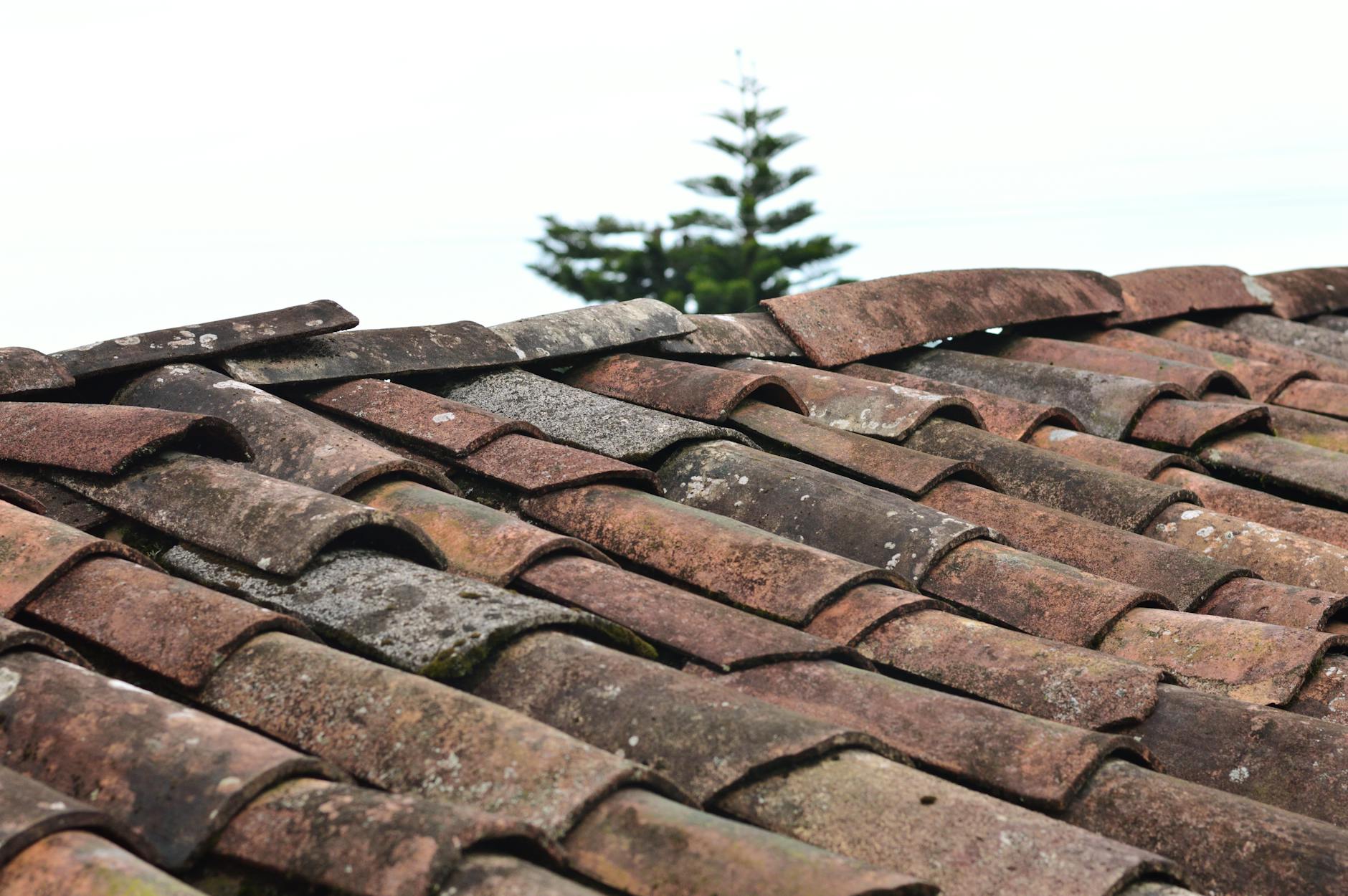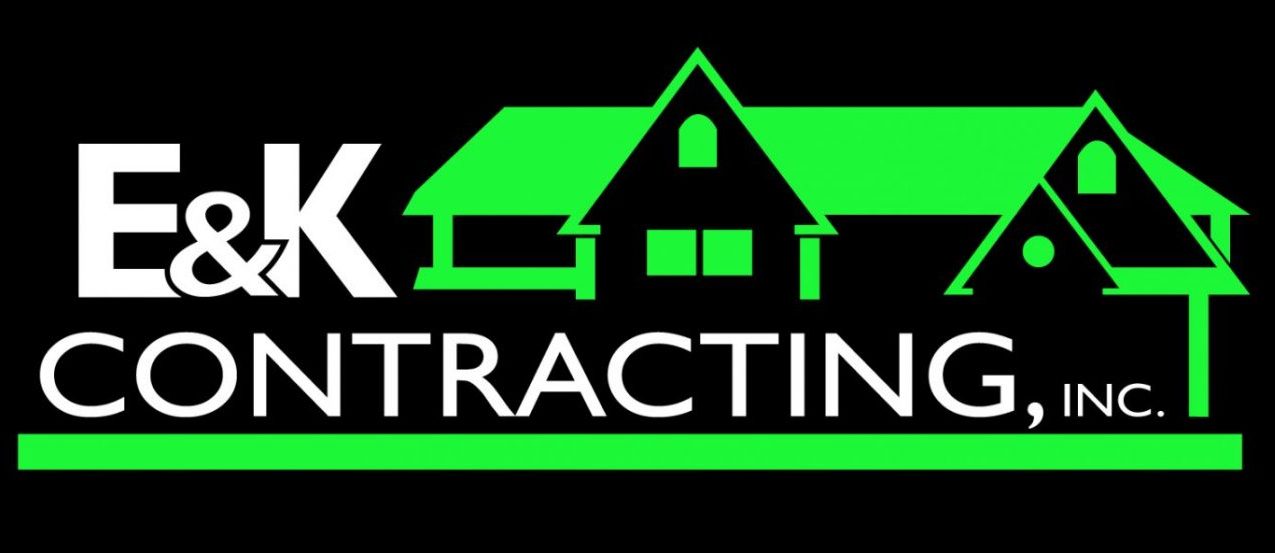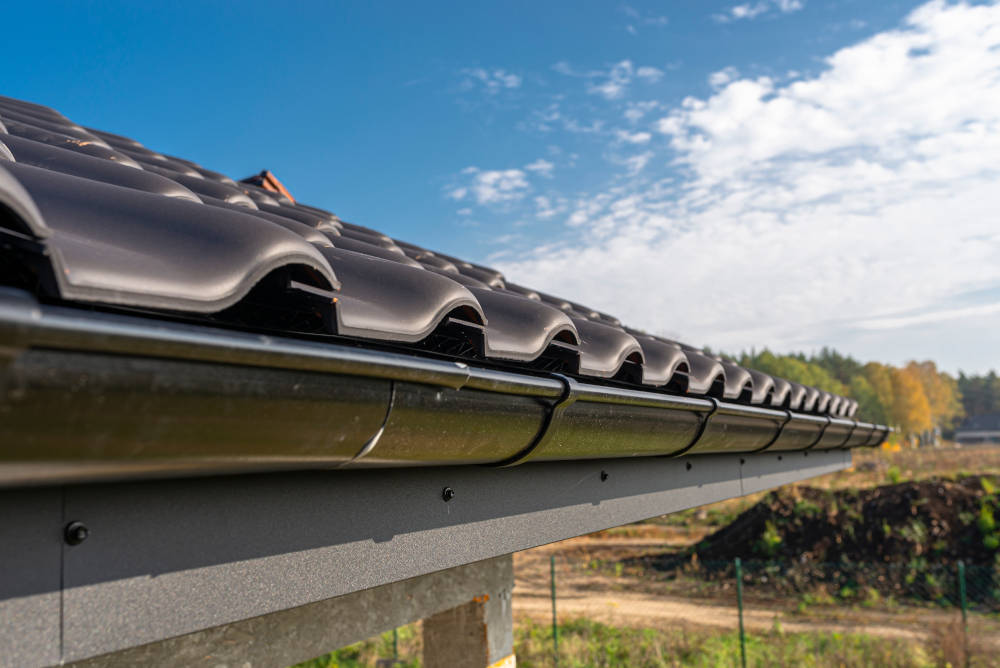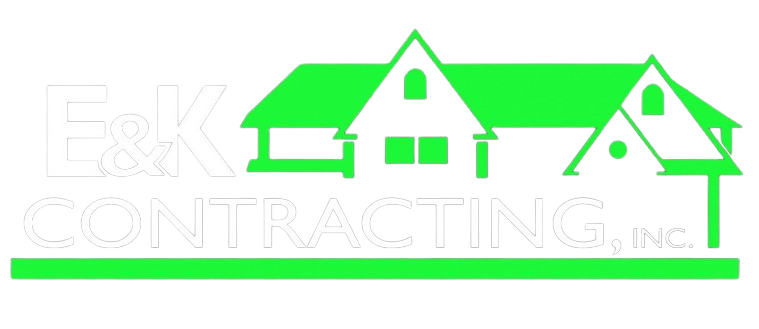Smart home tech is no longer just about convenience—it’s now a top factor in raising a home’s value, especially when paired with upgraded roofing and exterior features. Buyers in 2025 want homes that are secure, energy-smart, and ready for the future. New roofing systems with built-in sensors, solar capabilities, and automated climate controls are changing what makes a house stand out. Adding smart tech to your roof doesn’t just boost curb appeal; it strengthens your home’s protection and makes it far more attractive to modern buyers.
The Connection Between Smart Home Technology and Property Value
Smart technology isn’t just changing how homes feel inside—it’s raising the bar outside too. Buyers want more than good looks. They’re eyeing smart upgrades that boost comfort, cut costs, and protect their investment, and roofing tech is stepping into the spotlight. Let’s explore why smart home features, especially those on the roof, now hold real weight in property value and decision-making.
What the Latest Data Reveals
Recent real estate data draws a clear line between smart technology and stronger property values:
- A 2025 study by the National Association of Realtors found that homes with smart features often sell faster and at higher prices than those without smart systems.
- Industry studies show that homes with smart technology can fetch up to 5% more compared to similar homes lacking those upgrades.
- According to current surveys, about 77% of home buyers say smart tech influences their purchase—and that number jumps for features tied directly to safety, energy savings, and eco-friendliness.
- Smart security features, including advanced roof sensors for leak and weather detection, are now a top differentiator with buyers seeking peace of mind.
- In top markets like Los Angeles and Miami, smart homes—including those with solar roofs—are averaging 10% faster sales cycles and higher resale premiums.
The surge isn’t just in demand. The global smart home device market surpassed $58 billion in 2023 and continues to climb, proving these features aren’t just a trend—they’re expected.
When it comes to roofing, the numbers are just as strong:
- Solar and energy-efficient roof features are now cited as a must-have by more than 75% of buyers in new home construction.
- Properties with automated roof sensors, solar tiles, or energy monitoring systems are climbing market “favorite” lists and closing more quickly, even in competitive regions.
 Photo by Miguel Á. Padriñán
Photo by Miguel Á. Padriñán
The Psychology of Homebuyers and Smart Roof Features
Smart roof technology is hitting a nerve—in a good way—with today’s buyers. People want their homes to feel future-proof and sustainable—and the roof is playing a starring role in their decisions.
Buyers are motivated by:
- Savings: Energy-efficient roofs with solar panels or thermal insulation help cut bills. The idea of energy independence is more appealing than ever.
- Durability: Smart roofing, impact-resistant materials, and self-healing coatings hold up better in storms and extreme weather, promising less future hassle.
- Transparency: Roof sensors can diagnose leaks, monitor weather damage, and spot maintenance issues before they get costly, delivering reassurance and confidence.
- Eco-consciousness: Many buyers want homes that reduce their carbon footprint. Roofing upgrades like solar tiles or green “living” roofs meet this expectation and add visual wow-factor.
For buyers, it’s not just about what’s new—it’s about what’s smart and responsible. Tech-savvy shoppers, especially Millennials and Gen Z, are leading the charge. They’re drawn to features like:
- Automated or solar-powered roof ventilation fans
- Advanced attic sensors for moisture or heat
- Connected gutters and roof runoff systems that help with sustainability
These upgrades don’t just appeal to reason—they deliver an emotional win. People want to feel proud that their homes help the planet, offer safety, and make daily life simpler. In 2025, smart roofing isn’t just a bonus; it’s fast becoming the expectation.
Smart Roofing Technologies That Add Value
Today’s buyers want more than pretty shingles—they want a roof that works smarter, saves energy, and lasts years longer than a standard build. High-tech roofing can set your home apart and increase its value instantly. Here’s how the smartest roofing technologies of 2025 are making a difference.
Solar Roofs: Shingles, Tiles, and Integrated Photovoltaics
 Photo by Kindel Media
Photo by Kindel Media
Solar roofing is no longer just about big blue panels. This year, you have choices:
- Solar shingles blend in with regular asphalt shingles and keep your roof sleek.
- Integrated PV tiles work as both a roofing material and an energy source, hiding the tech almost completely from the street.
How does this add value?
- Smart solar integrates with your home’s energy management, letting you control what you use, store, and even sell back to the grid.
- Generates free, clean energy every day, lowering your utility bills.
- Many states and regions offer tax credits and rebates (some up to 30%), which quickly offset the upfront cost.
Regional tip: Solar roof incentives are strongest in sunny states but are now expanding thanks to federal support. In areas prone to blackouts, homes with solar and backup batteries are seeing even higher values on resale.
AI-Powered Roof Monitoring and Predictive Maintenance
Imagine your roof sending you a warning before a small drip turns into a big leak. That’s what AI-powered monitoring brings to today’s homes.
How does it work?
- Tiny sensors built into the roof track things like moisture, heat, and movement.
- AI analyzes this data and can spot signs of leaks, hail or wind damage, and even predict potential trouble after a big storm.
- Homeowners get real-time alerts by app, letting them call for service before a problem costs thousands.
Benefits for buyers:
- Reduced risk: New owners know the roof has been well-monitored.
- Lower long-term costs: Early fixes mean less emergency repair.
- Longer lifespan: Routine care guided by data stretches roof life years beyond the average.
AI-driven systems are now a requested feature in many new homes and remodels, and are especially popular in regions with unpredictable weather.
Impact-Resistant and Self-Healing Roofing Materials
Today’s roofing is tough, but smart roofing is even tougher—and some can actually fix themselves.
Innovations include:
- Class 4 impact-resistant shingles: Designed to withstand large hail and high winds without splitting or denting.
- Self-healing membranes: Use embedded microcapsules that release repairing agents when the surface is nicked or pierced, automatically sealing small cracks or holes.
Why buyers like it:
- Less worry during storm season
- Likely discounts on homeowners insurance in high-risk zones
- Fewer maintenance headaches down the line
This tech is especially valuable in areas known for severe weather or falling debris. While the upfront investment may be a bit higher, the long-term savings and peace of mind are impossible to ignore.
Weather-Responsive Roofing Integrations
A smart roof isn’t just strong—it’s also responsive to what’s happening outside.
Current breakthroughs:
- Automated snow-melting systems: Heating cables under the surface prevent dangerous ice dams and buildup.
- Smart ventilation and humidity controls: Sensors adjust attic airflow to prevent mold and manage temperature, reducing AC and heating costs.
- Energy-adaptive coatings: These special paints or membranes reflect heat in summer and absorb warmth in winter for lower utility bills year-round.
Weather-responsive systems do more than just react—they actively protect your home and wallet. These integrations make a noticeable difference in comfort and efficiency, especially in regions with tough winters or blazing summers.
Smart roofing tech is raising the standard for what a roof should do. If you want your home to stand out to buyers, these upgrades are the way forward.
Complementary Smart Upgrades That Enhance Roof Value
Adding advanced roofing is a major step, but pairing that with other smart home features helps your investment stretch even further. For homeowners looking to boost comfort, trim bills, and catch buyers’ eyes, combining smart roof tech with energy, security, and outdoor upgrades is a winning move. Here’s how the right mix of features works together for greater impact.
Smart Thermostats and Insulation Enhancements: The Perfect Pair with Efficient Roofing
The true power of a high-tech roof shines when you connect it with smart thermostats and upgraded insulation. Why? Your roof is often the main shield against outdoor heat and cold, but if air slips through old insulation or poor climate controls, you’ll never get the full payoff.
- Smart thermostats, like Google Nest or ecobee, let you manage home temperatures from your phone or by voice. They learn your patterns, cutting back heat and AC when you’re away.
- Upgraded insulation, especially in attics and rooflines, pairs with modern roofs to hold in comfortable air longer and block out temperature swings.
- Many recent studies show homes with both efficient roofing and smart HVAC controls see up to 20% lower energy bills compared to homes with just one or the other.
- Smart “zoning” systems even tie directly to attic fans or vents, syncing with sensors built into the roof, to keep every part of your home at its sweet spot.
Bottom line: A smart roof starts the energy savings, but layering in climate tech and insulation turns small improvements into real monthly returns and makes your living space noticeably more comfortable.
Smart Security: Cameras, Floodlights, and Entry Systems
Investing in your roof is about safety, too. When you connect that roof to a smart security system, you protect every entry point and give buyers real peace of mind.
- Outdoor cameras—often installed under eaves or at roof edges—keep an eye on your property 24/7. Some models send alerts when they detect motion or unexpected activity on the roof itself.
- Smart floodlights light up walkways and dark corners, automatically turning on with movement at night.
- Door and window sensors can combine with roof leak sensors and weather alarms for a full-home alert system.
- Video doorbells and smart locks complete the setup, letting you answer the door or grant access—no matter where you are.
- New smart security tech even includes roofline alarms for potential intrusion or storm damage, giving early warning before small problems get big.
Buyers with families and valuables will spot this layer of protection right away. It’s also a huge plus in neighborhoods where weather or theft is a risk.
Upgrading Outdoor Living Spaces with Smart Features
If the roof is the cover, your outdoor living spaces are where the magic happens. Smart upgrades outside make your patio, deck, or rooftop lounge feel high-end—and these features boost curb appeal as much as function.
 Photo by Kindel Media
Photo by Kindel Media
Consider these smart outdoor additions:
- Smart lighting: Voice- or app-controlled lights along pathways, staircases, or pergolas let you set the mood or boost nighttime security in seconds.
- Integrated speakers: Weatherproof Wi-Fi or Bluetooth speakers extend your music or podcast playlist from the living room to the backyard, all without dragging out extra cords.
- Automated irrigation: Smart sprinklers adjust watering based on weather, saving water and keeping your yard green.
- Power management: Covered exterior outlets and smart plugs let you control string lights, grills, or even charge devices right from your phone.
- Motorized awnings or shades: These sync with the weather to keep your patio cool when the sun gets intense.
When these features match your high-tech roof, buyers see a home that’s not just efficient and safe—but one designed for fun, entertaining, and easy living year-round.
Pairing your new smart roof with targeted upgrades inside and out gives you a home that’s more valuable, marketable, and comfortable. These improvements work together, delivering benefits that go well beyond what each could do alone.
Strategic Planning and Return on Investment
The smartest home improvements aren’t just about the latest features—they’re a mix of smart planning, knowing your local code, and understanding what will actually pay you back over time. With roofing and exterior upgrades, making the right choices upfront lets you skip headaches down the line, unlock rebates, and stand out on future listings. Here’s how to tailor your investment for your region, climate, and market strategy.
Evaluating Regional Climate and Building Codes: Tailor upgrade decisions to local weather challenges and regulations, with tips for choosing the right smart roof technologies.
 Photo by Magda Ehlers
Photo by Magda Ehlers
Before you buy new roof tech, check what works for your zone. Hot, dry summers in the Southwest? Cold, snowy winters up north? Hurricanes or wildfires? Each region calls for its own approach.
- Start with local building codes. In 2025, most cities update codes to deal with extreme weather and energy targets. Higher insulation values, fire- or flood-resistant materials, and solar requirements are more common—especially in places like California (Title 24) or New York City (Local Law 97).
- Check climate risk maps. These show floods, winds, wildfires, and heat zones. They’ll help you pick features like:
- Cool roof coatings for urban heat
- Impact-resistant or self-healing shingles for storm zones
- Fire-resistant designs in wildfire-prone areas
- Solar-ready or “battery-integrated” roofs in high-sun or blackout areas
- Get the right approvals. Even the best tech can’t deliver value if it fails inspection. Use contractors who know current model codes (IBC, IECC, NEC) and have experience with local amendments.
- Pick certified products. Look for CRRC-rated (Cool Roof Rating Council) materials or as required by your region. These get you into utility rebate programs and make resale easier.
- Balance heating and cooling needs. In northern climates, reflective roofs can save you in summer but may slightly bump heating bills in winter. The right insulation and design offset this, letting you get savings every season.
A few quick planning tips:
- Screen for moisture issues—choose membranes and ventilation approaches to match your rainfall and humidity.
- Use energy simulation tools and local builder recommendations to test options.
- Check if your homeowners association places any limits on solar or smart roof installs.
Smart planning upfront saves money and speeds up future resale. Your buyers—and your budget—will thank you.
Cost-Benefit Analysis and Incentives
Paying for new tech doesn’t have to mean draining your bank account. Smart roofs carry upfront costs but bring long-term savings, rebates, and better market value. Here’s what to expect, and how to make the math work for you:
Common Smart Roof Upgrade Costs in 2025:
- Solar shingles/tiles: $18,000–$30,000+ for a full installation. Higher cost, but often highest savings and best rebates.
- Cool roof coatings: $2,000–$7,000, depending on size and material.
- Impact-resistant shingles: $350–$900 per square (100 sq ft).
- Roof sensors and monitoring: $800–$3,000 for a basic system, more for advanced kits.
- Automated snow/ice systems: $2,500–$5,000 for full coverage.
Rebates and tax credits:
- Federal solar tax credits can cover up to 30% of solar roof costs.
- State/local utility programs often add $500–$5,000 in rebates for energy-efficient roofing or smart upgrades.
- Low-interest loans and special green financing are widely available for modern roofs.
How to Calculate ROI:
- Add up all incentives. Start with tax credits, rebates, and any low-rate financing.
- Estimate your annual savings. Most smart roofs lower energy bills by 10–40%, depending on local rates and features.
- Calculate payback period. Divide net cost by yearly savings. Most homeowners see full payback on cool roofs in 5–8 years, and on solar/monitoring setups in 6–12 years.
- Explore non-cash benefits. Shorter sale time, added buyer peace of mind, and a “green” marketing edge all matter. Highlight these in your listing.
Best Practices for Resale and Listings:
- List out all upgrades and expected energy savings in clear dollar terms.
- Include documentation for code compliance, rebates, and product certifications. This removes buyer uncertainty.
- Stage your home to show any smart features in action—apps, sensors, or solar stats.
- Markets respond to data: give buyers clear numbers and up-to-date info.
A smart roof isn’t just an expense. Done right, it’s a value engine, with returns showing up in your pocket and your property’s next sale. If you plan carefully, those returns go beyond energy savings—to better comfort, less stress, and an easy “yes” from buyers down the road.
Conclusion
Smart home upgrades for your roof are not only trendy—they’re smart investments that pay off in real dollars, comfort, and peace of mind. The days when buyers settled for basic shingles are over; now, they want roofs that save energy, prevent problems, and make life easier. Solar integration, AI-powered monitoring, and durable materials are leading the way, with strong data showing higher resale value and faster home sales.
Homeowners looking to raise property value should focus on upgrades that fit their local weather, meet up-to-date codes, and come with clear returns. Pair your new roof tech with smart security, climate controls, and energy upgrades for the biggest impact. Start planning now and document every improvement. This not only helps with rebates and incentives, but also makes your home stand out to buyers who know what matters.
Thanks for reading—now is the time to take those first steps toward a safer, smarter, and more valuable home. If you’ve tackled a smart roof upgrade or have questions, share your experience in the comments. Stay tuned for more tips on future-ready home improvements.


